
Platform companies & ecosystems : transformation of value chains towards ecosystem models.
A friend of mine likes to say that the human brain can only imagine what it already knows. This is the difficulty with imagining something new and innovative to invent the future, because we need to free ourselves from our usual mindset patterns.
Modeling a platform requires going through these steps of questioning models that we take for granted.
And one of these models, which is deeply rooted, is that of value chains and their linearity; Just look at the way we define them: B2B, B2C, BtoBtoC…
Linearity of value chains
We currently know value chains as a linear process, in which the producer of the service or product owns the chain: he usually controls the process, the distribution, the quality, the price, and is responsible for the value of the product/service.
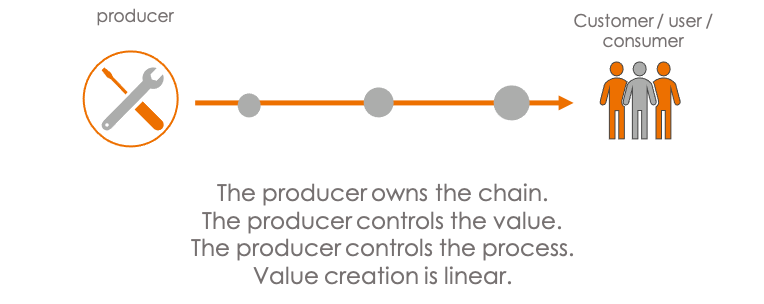
For example: Coca-Cola is responsible for the production of the drinks, their quality then they choose the distribution channels. This is called BtoBtoC. And in this chain, everyone has a well-defined role: Coca-Cola produces (B), the supermarket distributes (B), and the customer consumes (C). The customer does not produce, nor does the supermarket. Coca-Cola’s revenue comes from its distribution channels only. Not from the consumer directly.
If we stand from the point of view of the “first B”, which is usually the producer of the service or the product, we usually define value chains as B2B, B2C, C2C, B2B2C or B2B2C…
Transformation of value chains and roles within them
Now, let’s study how a platform creates value, and look at what the most important differences are from linear models;
1. The role of a platform is to create relations between different stakeholders, and to connect supply and demand. As a result, the role of the producer/supplier of the service or product is distinct from that of the platform: the value chain is no longer linear but becomes ecosystemic.
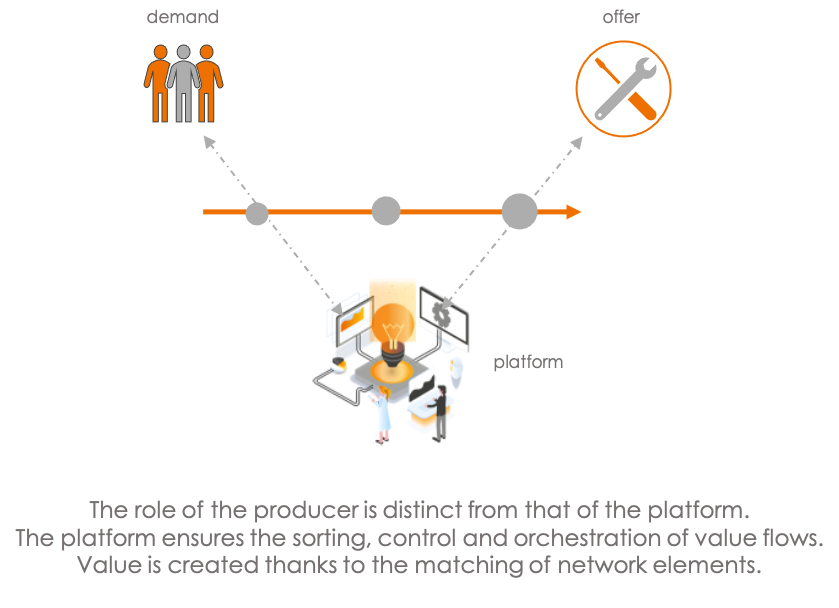
2. There are 4 types of roles in these models, as illustrated by the Airbnb example below:

3. The orchestrator who owns the platform is not necessarily the producer of the service or product:
- Uber does not own any cars (although there have been several attempts to buy fleets)
- Airbnb does not own any hotels
- Doctolib does not employ any doctors (at least not the ones who offer consultations)
- Deezer does not produce any music
- Etc.
4. And in contrast, the roles in the value chain can be many:
- one can for example be a user and a provider (traveler and host on Airbnb, viewer, and producer on YouTube, etc.)
- in the same way, one can be an orchestrator and a producer as illustrated by this small selection:

5. There are also multiple sources of revenues
First, they can come from the 3 types of stakeholders orchestrated by the owner of the platform: users, producers and/or partners. For Airbnb for example, revenues come from travelers, hosts, and photographs or cleaners.
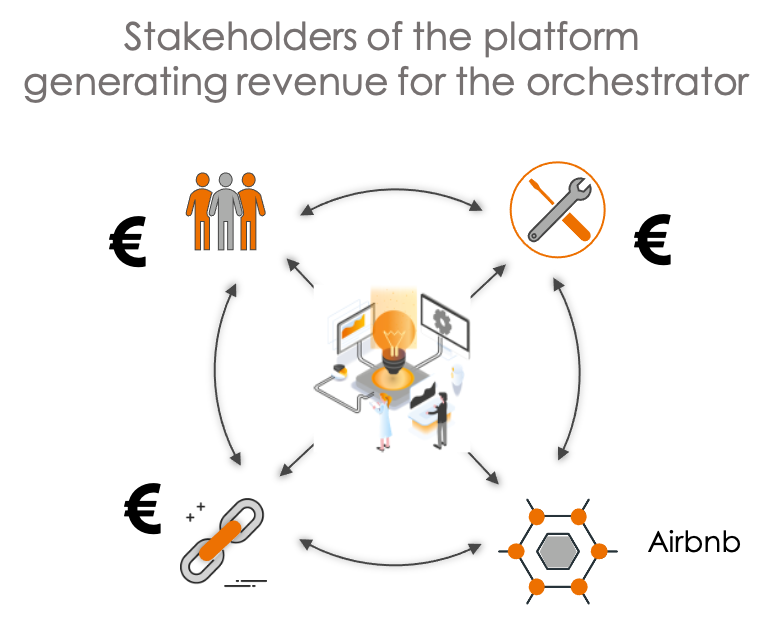
Then, as illustrated below, each of these stakeholders can themselves be companies or individuals; Airbnb does not make any difference in treatment between the 2, except from a tax point of view, and again, this has been imposed by some countries, not by the platform itself.
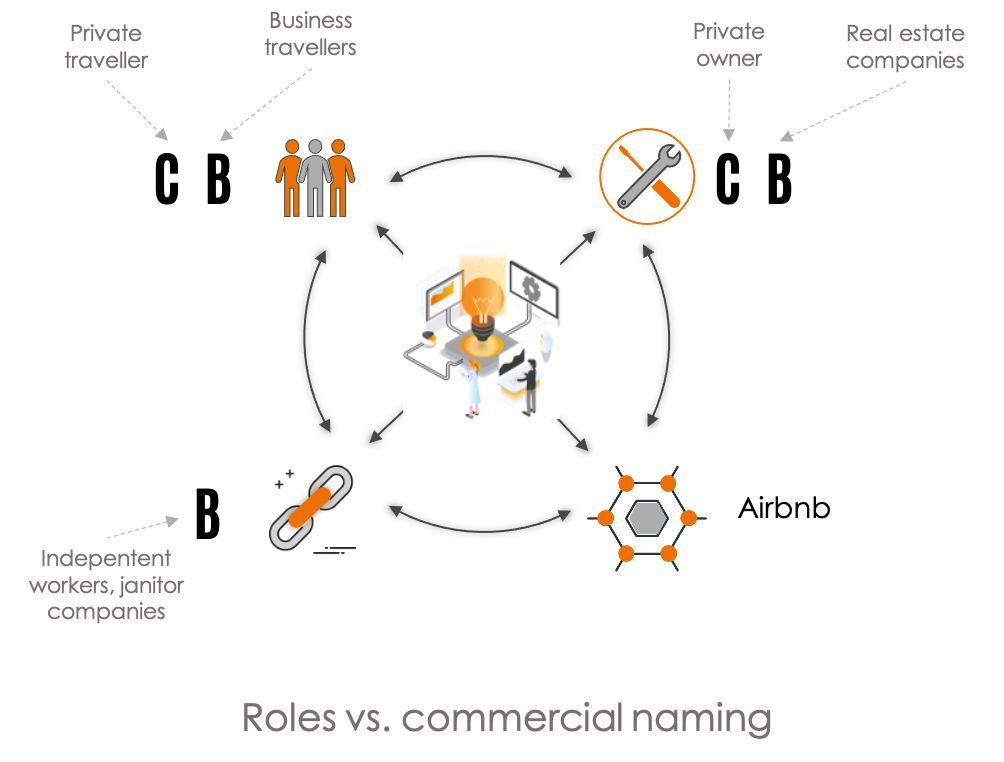
JSDHFOIQEGYF ??
Whether it is in terms of roles or revenue generation, it becomes complicated to talk about “Bto something” because 2 dimensions collide:
- The first question is: from which point of view do we stand? If we take the point of view of the orchestrator (and not the producer), we can describe the relationship between the orchestrator and its customers by calling it OtoC or OtoB for example, assuming that there is only one type of customer, B only, or C only. But this excludes the commercial relationship between users and producers:
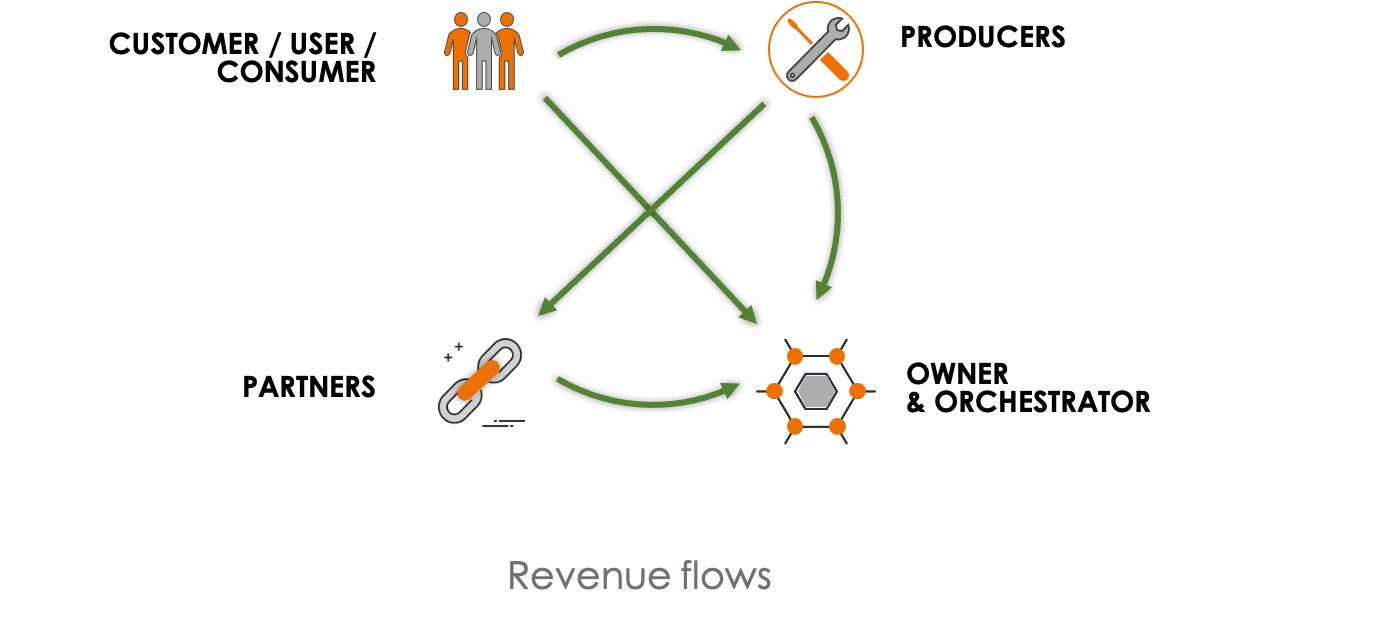
- Then there is the question of the diversity of the stakeholders: B, C, G (government), or several of these options at once? This would give something like OtoB&C. But here again, we exclude the commercial relationship between users and producers.
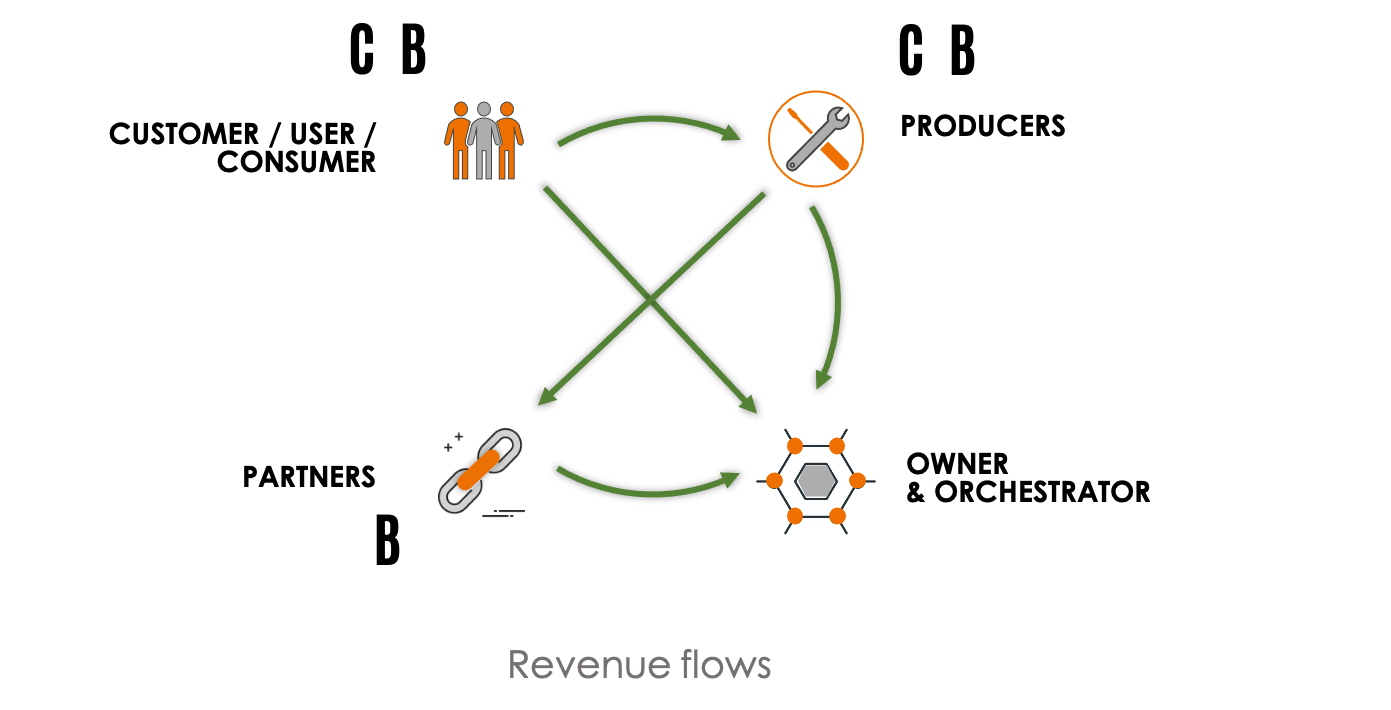
Annoying!
——————–
In reality, the positioning in an ecosystem will no longer be based solely on a B or C or G target, but on a customer journey, along which Bs, Cs and Gs can coexist, complement each other, exchange or create value and generate revenue. This way of describing a value chain is no longer really relevant in the case of platforms, or at least it becomes very difficult to articulate. This also poses another complexity, which is that of evaluating a potential market in terms of size or turnover : it will indeed be much more multidimensional than in linear models. But this is for another article…
Click here to discover our other articles
GET THE LATEST INSIGHTS DELIVERED TO YOUR INBOX
Don’t miss the new analyses of our experts.
